How tomatoes dive - tips for beginners
When they make a dive
If you first came across the term "tomato picking", then this process means shortening the main (tap) root in plants in order to stimulate the development of a branched root system in seedlings.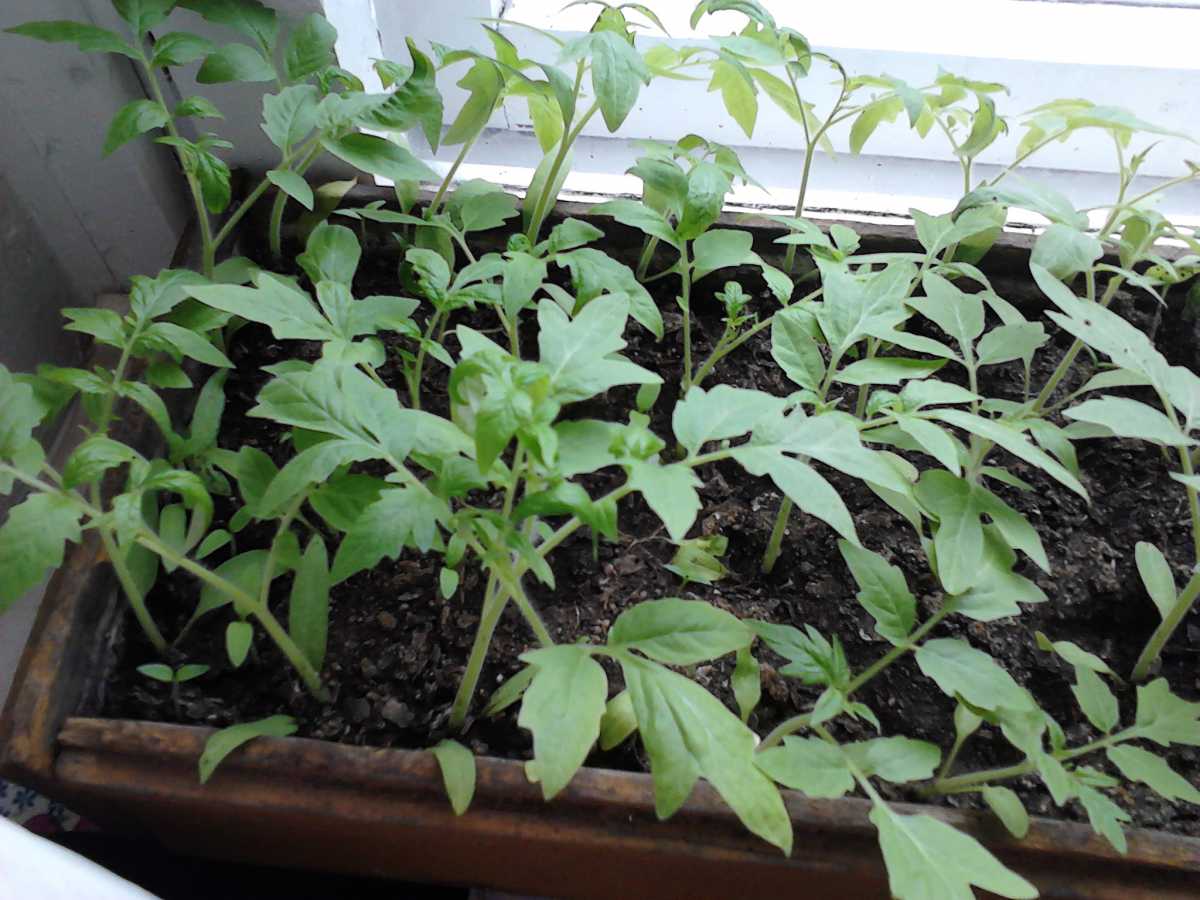 Not all vegetables planted for seedlings, without exception, are recommended to dive, but in the specific case for tomatoes, this is a necessary process, which, simultaneously with processing the root, also includes transplanting vegetables into a separate container, more spacious than the one where the seeds germinated.
Not all vegetables planted for seedlings, without exception, are recommended to dive, but in the specific case for tomatoes, this is a necessary process, which, simultaneously with processing the root, also includes transplanting vegetables into a separate container, more spacious than the one where the seeds germinated.
The first time you can pick tomatoes when the first 2 leaves have developed well on the plant - usually around 7-10 days after seed germination. Professionals recommend using the lunar calendar when growing and picking tomatoes. The calendar will tell you exactly when to carry out certain procedures.
An early pick will help each plant to develop into a strong bush, but at this stage, you should be very careful with the seedlings, avoiding stem breakage. The root system of the "baby" is 10 times smaller than that of the "adult" tomato, so the seedlings develop normally in the box for some time. If you did not have time to prepare for transplanting each bush into a separate container, then you can use the box again, but observing the planting interval of 7-10 cm so that the tomatoes receive enough light and nutrients.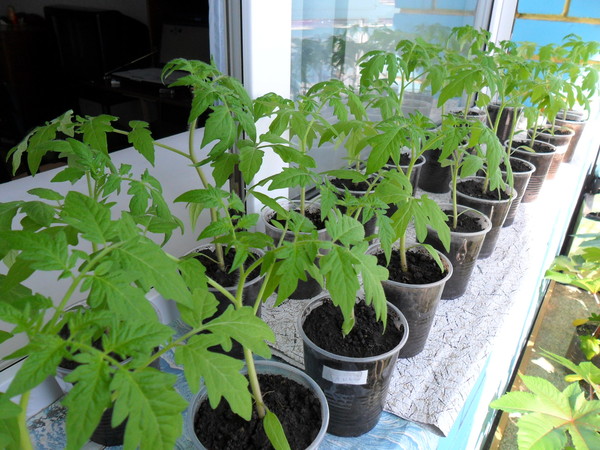
There are a number of conditions under which picking is recommended:
- If your goal is to obtain a powerful root system in grown seedlings, then picking will provide you with this by forming a wide network of lateral roots;
- If you sowed tomato seeds not separately in each container, but in a large box, then picking is recommended with transplanting into individual cups for their further healthy development, which will also contribute to good adaptation of plants when planting in the ground. If you leave the seedlings like this and develop in a bunch in a box, then the plants will be weak, and their roots can intertwine so much that it will not be an easy task to plant them later without damage.
- If you sowed thickly, and the seedlings began to form unevenly in strength. In this case, picking will help sort out viable plants at an early stage.
- It may happen that the soil you used to germinate the seeds contains pathogens and your young plants start to get sick. Then picking will become a surgical operation to remove infected plants and transplant healthy ones into new soil. With this event, you will save the rest of the seedlings and stop the disease at an early stage, because exceptionally strong plants are needed for an excellent harvest.
- Even if you have a wonderful seedling, but it developed too early for planting in the ground (seeds were sown early, the weather pumped up, etc.), then a pick can slow down the growth of plants. Overgrown tomato seedlings will be very painful to move to a permanent planting site.
How to dive correctly
Gardeners recommend using the lunar calendar to determine the best time to dive for tomato bushes.Now we will directly consider the basic process of how to dive tomatoes correctly. Watering tomato seedlings before diving.
The well-known vegetable grower Alexander Ganichkin recommends watering the seedlings abundantly a few hours before the start of the process in order to facilitate your work and increase the elasticity of the plants. Watering earlier, as well as immediately before replanting, will not be correct. In the first case, the soil will be dry, and so it is possible to damage the root during extraction, and in the second case, the adhesion of earth clods will occur, and there will be a high probability that the stem will break. Such options do not suit us, so we water, wait 2-3 hours and proceed.
We fill the prepared container for transplantation with soil. Ganichkin recommends not to immediately use a large container for small plants, it is better to take small cups of 100-150 ml. Here, plants can develop without harm for another 2-2.5 weeks, then they will definitely need to be dived into a container of a larger volume again. Picking immediately into a large container is not recommended for reasons of the fact that a small root system cannot cover the entire volume provided at once, therefore, various kinds of fungi can begin to successfully develop in the ground. The process of transplanting into large volumes is no different, therefore, having mastered the pick once, you can repeat it without any problems.
First, we dig out the plants from the box with a clod of earth. 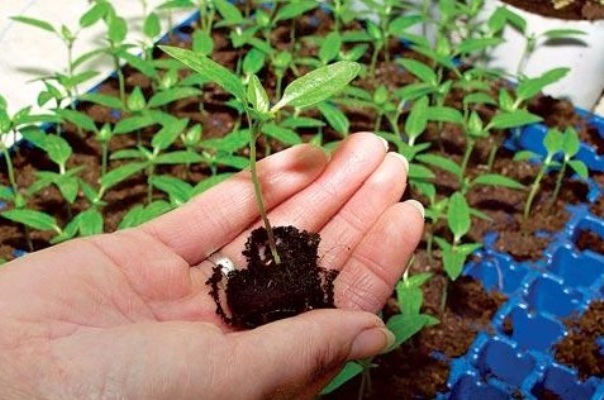 Remember that this must be done carefully. You can use any handy object: someone does the digging with a pencil or sushi stick, someone is helped by a teaspoon - choose what is convenient for you.
Remember that this must be done carefully. You can use any handy object: someone does the digging with a pencil or sushi stick, someone is helped by a teaspoon - choose what is convenient for you.
The second step is to separate the plants. It is safe to use a toothpick. Try to touch the seedlings with your hands as little as possible, especially the leaves. It is not necessary to completely clear the ground of roots - this way the plant will better tolerate a transplant.
A picking can be accompanied by pinching off a part of the central root, but at an early stage this root is so small and thin that in 90% of cases it will be damaged during the transplantation process, therefore, at this stage, shortening of the root can be neglected. If you pinch off too much, then the tomato will subsequently slow down its growth and will use all its strength to restore the root system. This works beneficially when you have overgrown seedlings, and for "babies" it becomes an unnecessary brake on their development.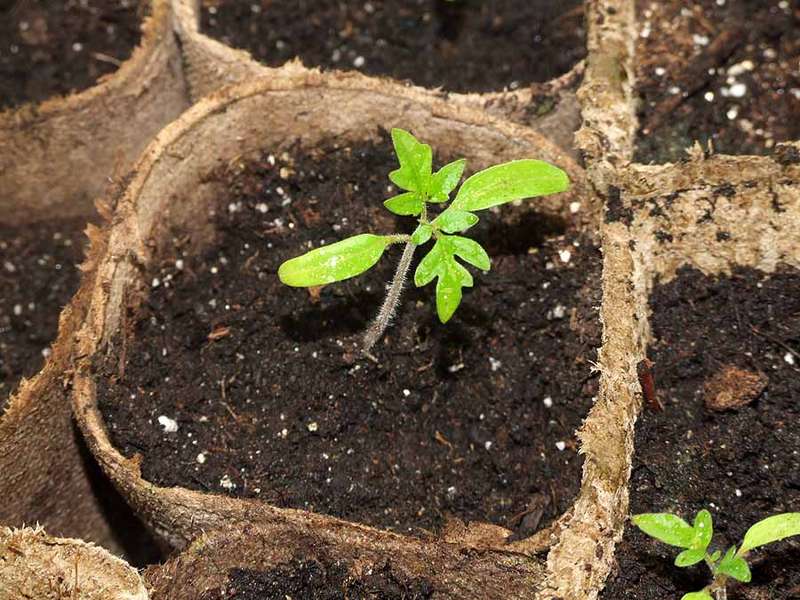
Then we place each plant in a well in a prepared container. It should be planted with a deepening to the cotyledon leaves themselves - this way you will stimulate the formation of a branched root system. We crush the soil around the plant a little.
Immediately after picking, tomato bushes need to be watered. The repeated diving of tomato bushes is carried out in the presence of 2 true leaves in a large container or, if there is a lack of space, in the same boxes, only with the replacement of soil and a row spacing of at least 15 cm. The process is similar to that described above. Grown tomatoes also go deep into the ground up to the initial leaves. The tool for the formation of holes for tomato seedlings.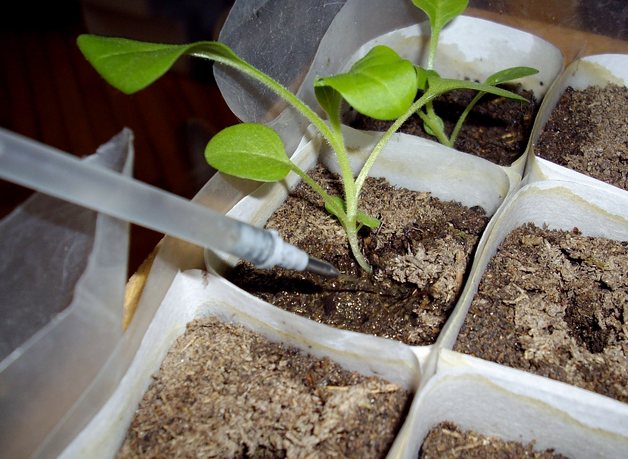
Although picking is not the most time-consuming process, some gardeners do without it completely. Growing tomatoes at home without picking is quite possible, and the seedlings are not at all worse than picking.
Everyone who grows tomatoes using this method claims that the process of adaptation of plants when planted in the ground is faster and more painless. In this method, in comparison with the classical method of growing home seedlings, differences arise already at the first stage of sowing seeds.
In this case, tomatoes are sown immediately in separate containers, so you need a sufficient number of them, you also need a relatively large space to accommodate all the seed. If you have a heated greenhouse, then this method is perfect. The choice of the required container is not limited, the main thing is that there are drainage holes in it.Therefore, it is also worth taking care of the availability of a pallet.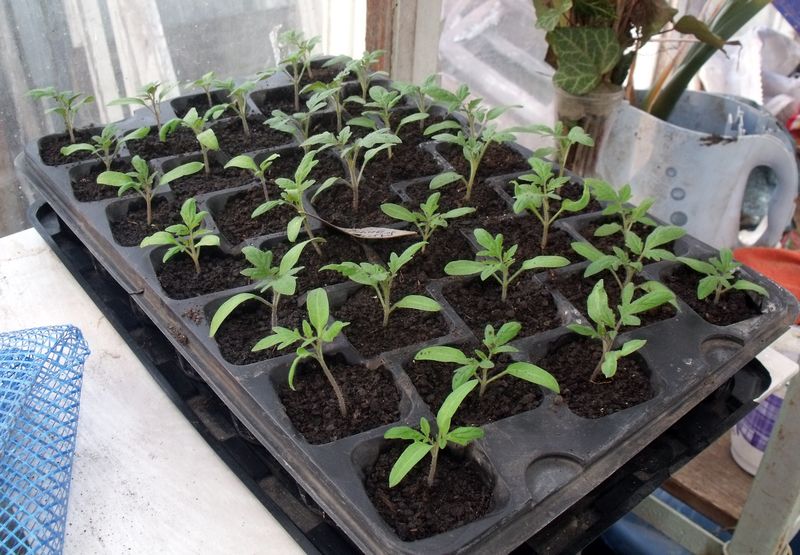
The soil for tomatoes should be loose and fertile. Because you will use the soil throughout the entire cultivation of seedlings, then before packaging it in a container, you need to carry out a disinfection process (you can simply ignite it in the oven).
3-5 germinated seeds are placed in each container with moistened soil to a depth of not more than 1 cm, then watered from a spray bottle. Seedling care is standard.
When the plants sprout and grow a little, they need to be thinned out, leaving 2 of the most viable in each glass. At the same time, it is recommended not to tear out unsuccessful seedlings, but carefully cut them off.
As the tomato seedlings grow without picking, in order for the root system to form well, you need to gradually pour the earth into the container. When picking, we deepened the plant when transplanting, and here we use the addition of soil to the level of the leaves.
In the future, you will need to leave only one plant in each pot. If the seedlings turned out to be strong, it is not necessary to throw away the extra bush - transplant it into a separate container, let it develop further.
Video "Picking home tomatoes"
A video about how and when to dive tomato seedlings correctly.
